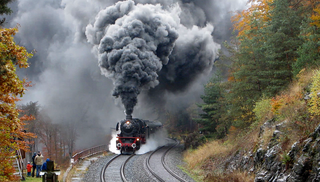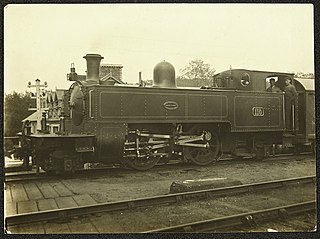History
The Class A1 locomotives were rebuilds of the Class A "Heavy Compounds" that had been designed by the BNCR Locomotive Engineer Bowman Malcolm. The first Class A locomotive had been built by the BNCR at York Road, Belfast in 1901 shortly before amalgamation with the Midland Railway and building continued with the Midland Railway constructing six at their Derby works. The locomotives were built as two-cylinder compounds using the Worsdell-von Borries system, the high pressure cylinders having a diameter of 18 inches (457 mm) and low pressure ones of 26 inches (660 mm), both with 24 inches (610 mm) stroke.
Bowman Malcolm was an Irish railway engineer. He became Locomotive Superintendent of the Belfast and Northern Counties Railway (BNCR) at the age of 22 and later took on the additional role of Civil Engineer. He was an advocate of compound locomotives which he introduced to the BNCR.
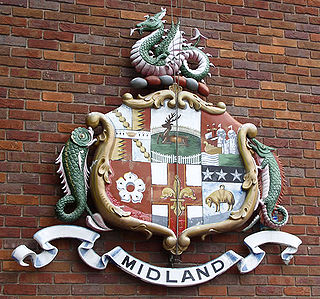
The Midland Railway (MR) was a railway company in the United Kingdom from 1844 to 1922, when it became part of the London, Midland and Scottish Railway. It had a large network of lines managed from its headquarters in Derby. It became the third-largest railway undertaking in the British Isles.

The Derby railway works comprised a number of British manufacturing facilities designing and building locomotives and rolling stock in Derby, England. The first of these was a group of three maintenance sheds opened around 1840 behind Derby station. This developed into a manufacturing facility called the Midland Railway Locomotive Works, known locally as "the loco" and in 1873 manufacturing was split into locomotive and rolling stock manufacture, with rolling stock work transferred to a new facility, Derby Carriage & Wagon Works.
Following the end of World War I the state of the locomotives operating in Northern Ireland was well below that which was needed to run the services effectively; many needed replacing but, however, cost was a major factor. It was decided to implement a "Renewal Programme" in which, not only would new locomotives be built but also suitable classes of locomotives would be rebuilt, in the main following the style of the Midland Railway and the LMS.

World War I, also known as the First World War or the Great War, was a global war originating in Europe that lasted from 28 July 1914 to 11 November 1918. Contemporaneously described as "the war to end all wars", it led to the mobilisation of more than 70 million military personnel, including 60 million Europeans, making it one of the largest wars in history. It is also one of the deadliest conflicts in history, with an estimated nine million combatants and seven million civilian deaths as a direct result of the war, while resulting genocides and the 1918 influenza pandemic caused another 50 to 100 million deaths worldwide.

Northern Ireland is a part of the United Kingdom in the north-east of the island of Ireland, variously described as a country, province or region. Northern Ireland shares a border to the south and west with the Republic of Ireland. In 2011, its population was 1,810,863, constituting about 30% of the island's total population and about 3% of the UK's population. Established by the Northern Ireland Act 1998 as part of the Good Friday Agreement, the Northern Ireland Assembly holds responsibility for a range of devolved policy matters, while other areas are reserved for the British government. Northern Ireland co-operates with the Republic of Ireland in some areas, and the Agreement granted the Republic the ability to "put forward views and proposals" with "determined efforts to resolve disagreements between the two governments".
As part of this "Renewal Programme" members of Class A were rebuilt as two-cylinder simples (i.e. not compounds). Those reclassified as Class A1 were rebuilt with a Midland Railway type RG6 boiler and new cylinders both of 18 inches (457 mm) diameter by 24 inches (610 mm) stroke. The boiler was higher pitched than the original to allow the firebox and ash pan to clear the rear driving wheel axle and an extension of 24.75 inches (630 mm) to the smokebox saddle was needed to offer support. Although the effect was less striking than that of the similarly rebuilt Class B3, the modified appearance was such that these locomotives would be included among those that gained the nickname of "Whippet" because of a perceived resemblance to the racing dog.
The LMS Class B3 4-4-0 passenger steam locomotives were rebuilds of Belfast and Northern Counties Railway (BNCR) two-cylinder compound locomotives. They operated services throughout the NCC’s 5 ft 3 in broad gauge system in the north-east of Ireland.
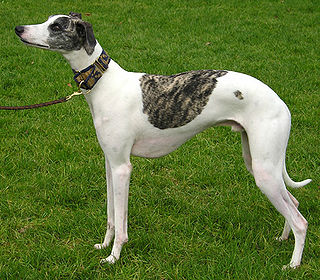
The Whippet is a dog breed of medium-size. They are a sighthound breed that originated in England, where they descended from greyhounds. Whippets today still strongly resemble a smaller greyhound. Shown in the Hound group, Whippets have relatively few health problems other than arrhythmia. Whippets also participate in dog sports such as lure coursing, agility, and flyball. The name is derived from an early 17th-century word, now obsolete, meaning "to move briskly".
All the class were officially named after mountains although that allocated to No. 58, Lurigethan, was never carried.
The majority of the Class A1 engines were coupled to what was known as the "Standard" tender which could carry 6 long tons (6.1 t) of coal and 2,090 imperial gallons (9,500 l; 2,510 US gal) of water. No.34, however, ran with one of the three "Medium" tenders that had a 2,590 imperial gallons (11,800 l; 3,110 US gal) water capacity and No.62 acquired a spare built up tender with a capacity of 2,690 imperial gallons (12,200 l; 3,230 US gal). No.58 acquired a tender cab which led to her being a regular visitor on the Dungiven branch where tender first running was required.
Nos.33, 58 and 69 later received boilers with a working pressure of 200 psi (1.38 MPa) in place of 160 psi (1.10 MPa). This led to their being allocated to the Belfast area during the late 1930s where duties were more onerous. No.33 was shedded at York Road while the other two were at Larne.

Belfast is a city in the United Kingdom, the capital city of Northern Ireland, standing on the banks of the River Lagan on the east coast of Ireland. It is the largest city in Northern Ireland and second-largest on the island of Ireland. It had a population of 333,871 as of 2015.
No.65 worked in a spare capacity at York Road and No.62 was based at Cookstown.
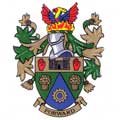
Cookstown is a town and townland in County Tyrone, Northern Ireland. It is the fourth largest town in the county and had a population of 22,838 in the 2011 census. It is one of the main towns in the area of Mid-Ulster. It was founded around 1620 when the townlands in the area were leased by an English ecclesiastical lawyer, Dr. Alan Cooke, from the Archbishop of Armagh, who had been granted the lands after the Flight of the Earls during the Plantation of Ulster. It was one of the main centres of the linen industry West of the River Bann, and until 1956, the processes of flax spinning, weaving, bleaching and beetling were carried out in the town.
The builders plates showing dates in the late 1920s and early 1930s belied the age of these engines and the heavy traffic that they handled during World War II showed up their weaknesses more than newly built locomotives. Nevertheless, the majority of the class survived to be taken into Ulster Transport Authority stock and were scrapped in the mid 1950s.
Building and withdrawal data
Rebuilding and naming information for the members of Class A1 are shown in the table below:
| Number | Builder | Built | Rebuilt | Name
as rebuilt | Scrapped/Sold |
|---|
| 33 | York Rd | 000000001902-07-01-0000July 1902 | 000000001928-12-01-0000December 1928 | Binevanagh | 000000001949-11-01-0000November 1949 |
| 34 | York Rd | 000000001901-04-01-0000April 1901 | 000000001928-04-01-0000April 1928 | Knocklayd | 000000001950-10-01-0000October 1950 |
| 58 | York Rd | 000000001907-01-01-0000January 1907 | 000000001934-02-01-0000February 1934 | Lurigethan * | 000000001954-08-01-0000August 1954 |
| 62 | York Rd | 000000001903-08-01-0000August 1903 | 000000001928-07-01-0000July 1928 | Slemish | 000000001954-08-01-0000August 1954 |
| 64 | Derby | 000000001905-05-01-0000May 1905 | 000000001929-08-01-0000August 1929 | Trostan | 000000001954-08-01-0000August 1954 |
| 65 | Derby | 000000001905-05-01-0000May 1905 | 000000001929-06-01-0000June 1929 | Knockagh | 000000001950-10-01-0000October 1950 |
| 66 | Derby | 000000001905-05-01-0000May 1905 | 000000001930-05-01-0000May 1930 | Ben Madigan | 000000001954-08-01-0000August 1954 |
| 68 | Derby | 000000001908-06-01-0000June 1908 | 000000001927-12-01-0000December 1927 | Slieve Gallion | 000000001947-11-01-0000November 1947 |
| 69 | York Rd | 000000001904-12-01-0000December 1904 | 000000001933-06-01-0000June 1933 | Slieve Bane | 000000001954-08-01-0000August 1954 |
|
* Allocated the name shown but this was never carried.
Livery
LMS NCC
The Class A1 locomotives were painted in crimson lake with yellow and black lining. The LMS crest was carried on the upper cab sides. The initials "NCC" in shaded serif gold capital letters were placed centrally on the tender sides. Number plates were brass with raised digits and edge; they were carried on the lower cab sides with another placed centrally on the back of the tender tank. On the named engines, curved nameplates were fitted above the leading driving wheel splashers. Buffer beams and number plate and name plate backgrounds were painted red. The engine number was applied to the front buffer beam in shaded gold digits.
During World War II, the locomotives were painted black with red buffer beams and number plate and name plate backgrounds providing relief.
UTA
Under the Ulster Transport Authority, the engines were painted black with vermilion and yellow lining. Buffer beams, name and number plate backgrounds were red and the practice of putting the number on the front buffer beam was continued.
The UTA roundel, 14 inches (356 mm) in diameter, with "Ulster Transport" in orange block capitals, lined in red, surrounding a white shield bearing the red hand of Ulster, all on a mid-green background, was placed in the middle of the tender sides.
This page is based on this
Wikipedia article Text is available under the
CC BY-SA 4.0 license; additional terms may apply.
Images, videos and audio are available under their respective licenses.

